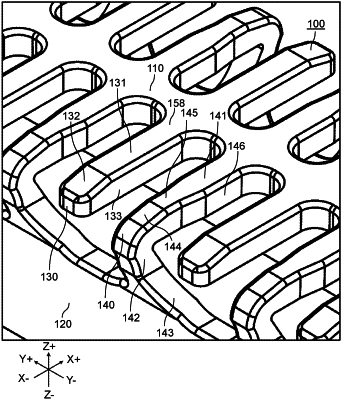| CPC B26B 19/04 (2013.01) | 11 Claims |

|
1. A comb-shaped outer blade configured to be attached to an electric razor, the comb-shaped outer blade comprising:
a base part that has a rod shape and extends in a first direction;
an attachment part that has a plate shape and extends in the first direction and a second direction intersecting the first direction;
open blade parts each of which has a cantilever shape and protrudes from the base part in a third direction which intersects the first direction and the second direction; and
bent blade parts arranged alternately with the open blade parts in the first direction, the bent blade parts connecting the base part to the attachment part, wherein:
each of the bent blade parts comprises:
a protruding part that protrudes from the base part along the third direction;
a connecting part attached to the attachment part; and
a bent part connecting the protruding part and the connecting part, and bent at an acute angle,
the connecting part extends from the bent part to the attachment part so as to approach the base part in the third direction as leaving away from the bent part,
each of the open blade parts comprises:
a first upper surface part that extends in the first direction and the third direction; and
a first inclined surface part that has a flat upper surface and extends from a distal end of the upper surface part in the third direction and the flat upper surface inclines so as to approaches the attachment part in the second direction as leaving away from the base part, and
a thickness of the first inclined surface part decreases as leaving away from the first upper surface part.
|